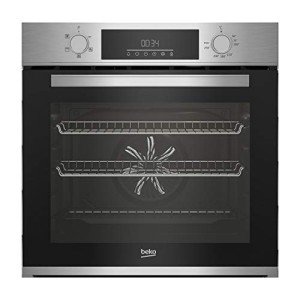The Rise of Single Built-In Ovens: A Comprehensive Guide
In today's contemporary kitchens, the choice of appliances plays a critical role in integrating performance with visual appeal. Among these appliances, the single built-in oven has become a preferred among homeowners and chefs alike. This short article delves into the features, advantages, and factors to consider associated with single built-in ovens while dealing with regularly asked concerns (FAQs).
Understanding Single Built-In Ovens
Single built-in ovens are developed to fit seamlessly within kitchen cabinets. Unlike freestanding ovens, which stand alone and might occupy more space, built-in ovens are installed straight into the kitchen facilities, offering a streamlined, integrated appearance. They can run independently or in conjunction with a cooktop, making the most of the effectiveness and styles of modern cooking areas.
Functions of Single Built-In Ovens
Single built-in ovens come geared up with a range of ingenious functions that improve their performance and user experience. Some typical features consist of:
| Feature | Description |
|---|---|
| Self-Cleaning | A function that cleans the oven interior at high temperatures, minimizing the need for manual scrubbing. |
| Convection Cooking | A fan distributes hot air, guaranteeing even cooking and browning of food. |
| Smart Technology | Wi-Fi connectivity that makes it possible for control over the oven from smart devices, in addition to recipe assistance and tracking. |
| Numerous Cooking Modes | Choices such as baking, broiling, roasting, and grilling to match different cooking requirements. |
| Touch Controls | Intuitive touch user interfaces that permit simple temperature level and timer adjustments. |
| Smooth Design | Aesthetic finishes like stainless-steel, black, and custom-made panel-ready options for a tailored kitchen look. |
Advantages of Single Built-In Ovens
- Space-Saving Design: Built-in ovens occupy less flooring space, making them perfect for compact kitchen areas or for homeowners wanting to optimize kitchen layouts.
- Improved Aesthetics: Their integrated design contributes to a streamlined appearance, permitting a more harmonious look with kitchen cabinets.
- Improved Functionality: With innovative functions like accurate temperature level controls and numerous cooking modes, built-in ovens provide adaptability for various culinary tasks.
- Increased Value: Homes geared up with contemporary, high-quality devices like built-in ovens tend to have higher market price.
- Personalization: Built-in ovens use personalized options, permitting homeowners to pick styles that match their kitchen design completely.
Factors to consider When Choosing a Single Built-In Oven
When picking a single built-in oven, numerous aspects must be taken into account to ensure that it meets cooking requirements and fits the kitchen style. Below are crucial factors to consider:
Size and Capacity:
- Standard dimensions generally range from 24 inches to 30 inches broad.
- Consider the internal capacity, measured in cubic feet, depending on the cooking needs of the home.
Fuel Type:
- Built-in ovens can utilize gas, electric, or dual-fuel alternatives.
- Electric ovens are known for consistency, while gas ovens offer quicker heat modifications.
Installation:
- Proper installation is essential for security and functionality. Expert installation is advised, especially for gas ovens.
Spending plan:

- Prices can differ extensively based on brand name, features, and extra technology. Determine a budget plan before shopping.
Energy Efficiency:
- Look for ovens with energy rankings to guarantee reduced electrical energy use in time.
Brand name and Warranty:
- Choose reputable brand names understood for sturdiness and client service. Also, think about guarantee alternatives.
Frequently Asked Question About Single Built-In Ovens
1. How does a single built-in oven differ from a double built-in oven?A single built-in
oven has one cooking compartment, while a double built-in oven includes 2 separate compartments, permitting simultaneous cooking at different temperature levels. 2. Can built-in ovens be placed under the countertop?Typically, built-in ovens are developed to fit within cabinets
. However, it is crucial to make sure correct ventilation and adherence to setup standards for security. 3. How do I clean up a self-cleaning single built-in oven?To trigger a self-cleaning cycle, remove
racks and other items, then choose the cleansing function according to the
manufacturer's instructions. After the cycle, enable the oven to cool in the past wiping away ash residue. 4. Is it worth investing in a wise single built-in oven?Smart ovens offer adaptability, convenience, and integration with other smart home devices.
They can be especially advantageous for tech-savvy users who delight in
precision cooking and remote tracking. 5. What must I do if my built-in oven is not heating up properly?If the oven stops working to heat, look for power problems, make sure the settings are appropriate, and verify that the heating element is working.
If problems continue, speak with a professional service technician. Single built-in ovens represent a mix of efficiency, style, and technological development in contemporary kitchen styles. Whether in a compact space or a sprawling premium kitchen, these ovens offer property owners with the
tools needed to explore their culinary creativity while maintaining an organized and sophisticated visual. As customers continue to invest in their homes, understanding the ins and outs of built-in ovens can lead to informed choices that enhance both cooking experiences and home value. As innovation progresses, the future of single built-in ovens guarantees much more exciting advancements for cooking lovers.
